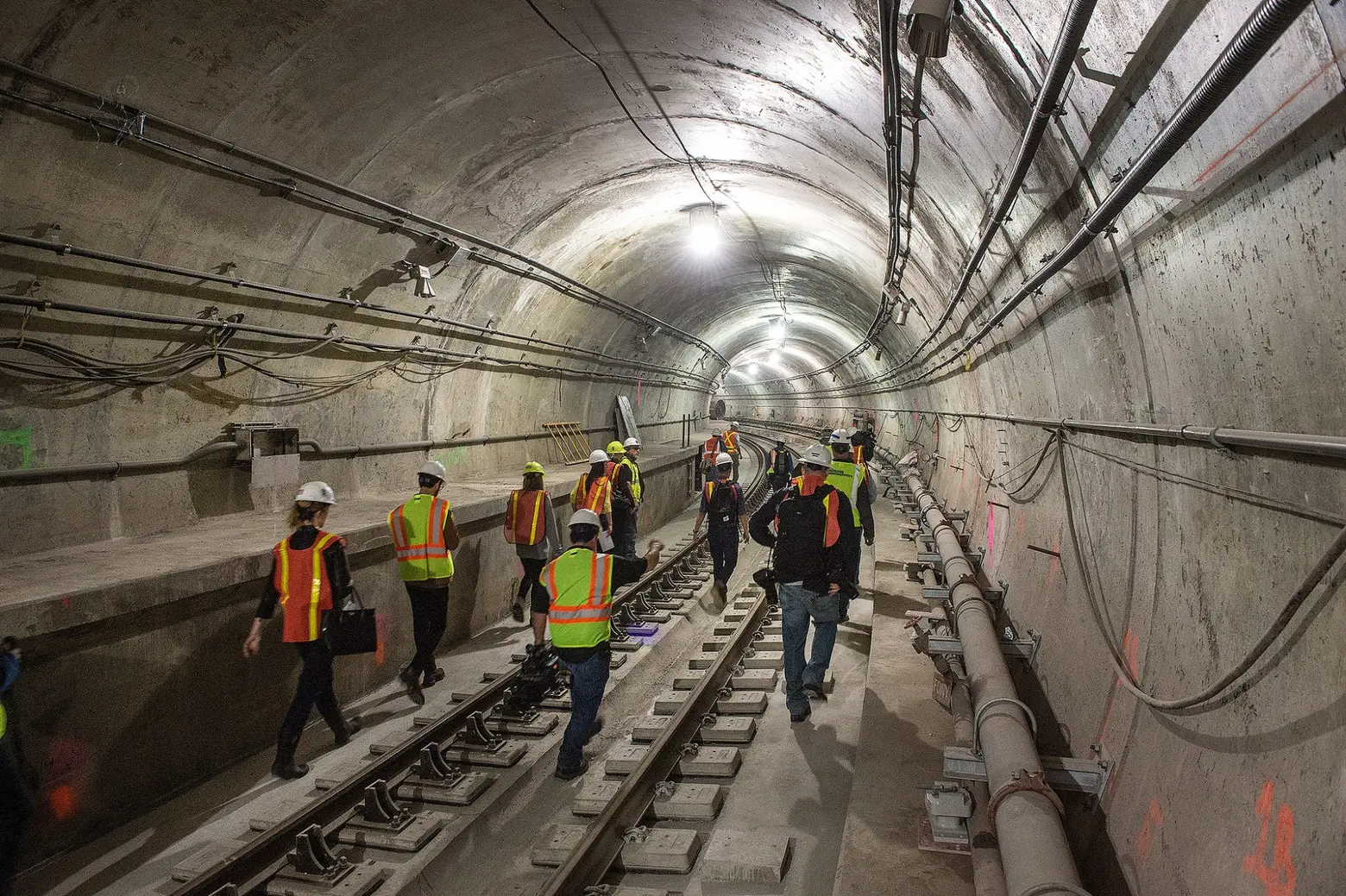Why do transit projects in NYC cost more than anywhere else in the world?

Construction workers giving a tour of the Second Avenue subway in 2015, photo via the MTA on Flickr
Even as the Metropolitan Transportation Authority has cut costs on basic maintenance, they have allowed trade unions, construction companies and consulting firms to negotiate exorbitant deals on transit projects, with little intervention from officials. According to an investigation by the New York Times, labor unions have secured deals requiring construction sites be staffed as many as four times more workers than anywhere else in the world. Construction companies have increased their projected costs by up to 50 percent when bidding for work from the MTA and consulting firms have convinced the authority to spend an excessive amount on design and management. Caught up in the bureaucracy of the industry, neither public officials nor the authority have attempted to contain the spending.
The Times points to three transit projects in the New York area that have cost much more than the average of similar projects around the world: the Second Avenue Subway, the No.7 train extension and the East Side Access tunnel, which will connect Grand Central Terminal with the Long Island Rail Road. When looking at these projects, factors like over-staffing, generous contracts and a lack of competition among bids are reasons for the high capital costs.
The estimated cost of the East Side Access project has jumped to $12 billion, or about $3.5 billion for each new mile of track. This is seven times the average elsewhere. On this project, an accountant discovered that 900 workers were being paid about $1,000 per day to do only 700 jobs available.
Michael Horodniceau, the former head of construction at the MTA, told the Times: “Nobody knew what those people were doing, if they were doing anything. All we knew is they were each being paid about $1,000 every day.”
The construction of the Second Avenue subway cost far more than average at a staggering $2.5 billion per mile. In Paris, a similar project, the Line 14 extension, is under construction. Both projects involve extending older lines to reduce system crowding and face strict regulations and high density. The difference? Extending Line 14 will cost only $450 million per mile.
In New York, wages and labor conditions are made through negotiations between the unions and the companies. Despite using taxpayer dollars to pay for capital costs, the government does not sit in on these negotiations. It falls on the construction companies to curb the requests of unions. But the companies actually want to maximize costs because they earn a percentage of the project’s costs as profit.
In other cities, companies typically tack on 10 percent to their estimated costs to account for overhead, profit and change orders. Usually, the final profit is about 5 percent of the total project cost. In New York, vendors add on between 15 and 25 percent to account for working with the MTA, another 10 percent for possible changes and then another 10 to 12 percent for profit and overhead.
Another issue for the MTA is a lack of bid competition, with the average project over the past five years receiving just 3.5 bids. The construction of the Second Avenue tunnel received just two bids, allowing them to inflate the price tag. Originally, the MTA estimated the contract would cost $290 million. The deal was awarded for about $350 million.
MTA Chairman, Joe Lhota, told the Times he recently appointed working groups to study the costs and the procurement process. “We recognize this has been a problem,” Lhota said. “We’re never going to deny history. This is an issue that needs to be addressed. It needs to be attacked.”
[Via NY Times]
RELATED:




























